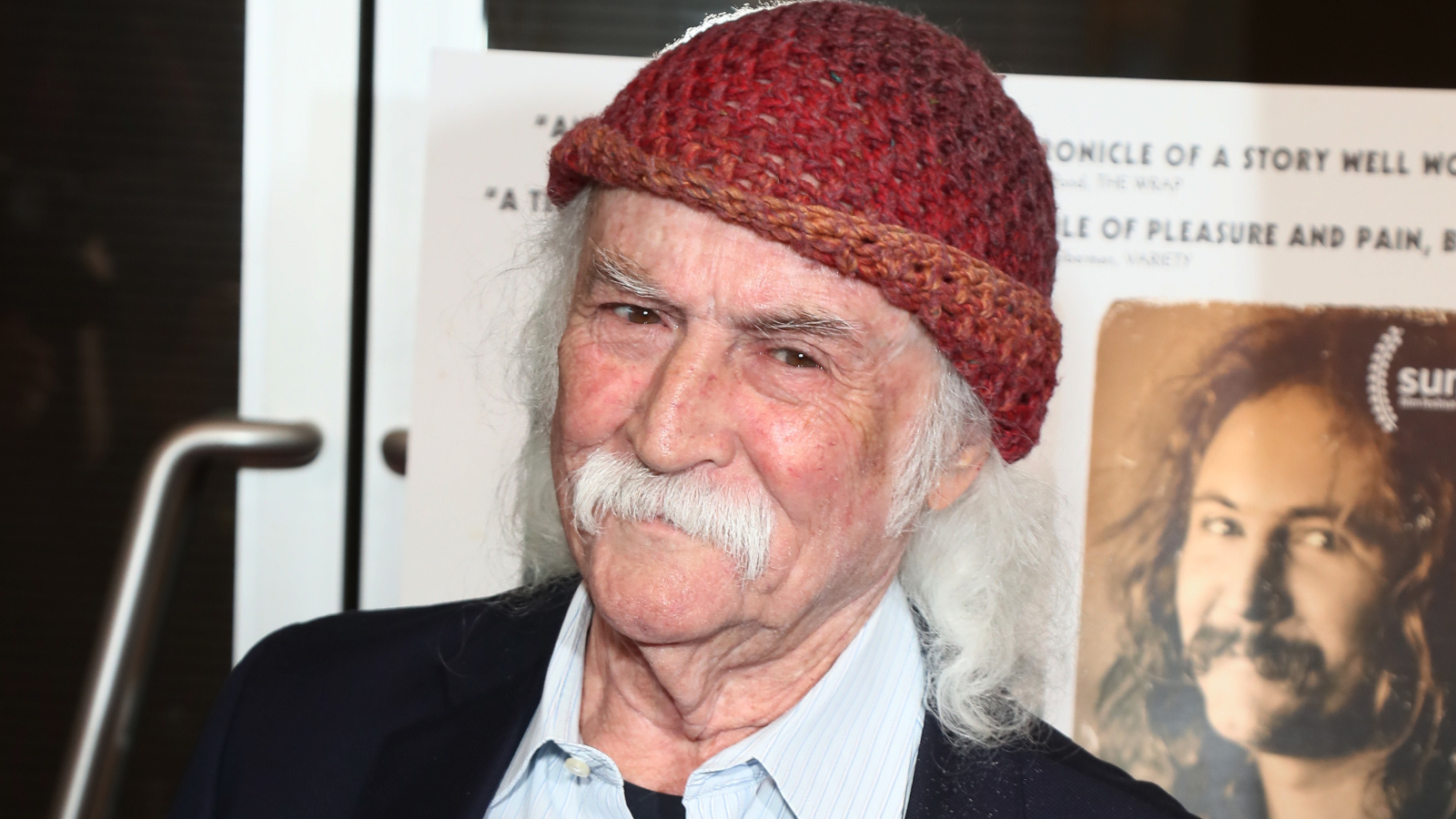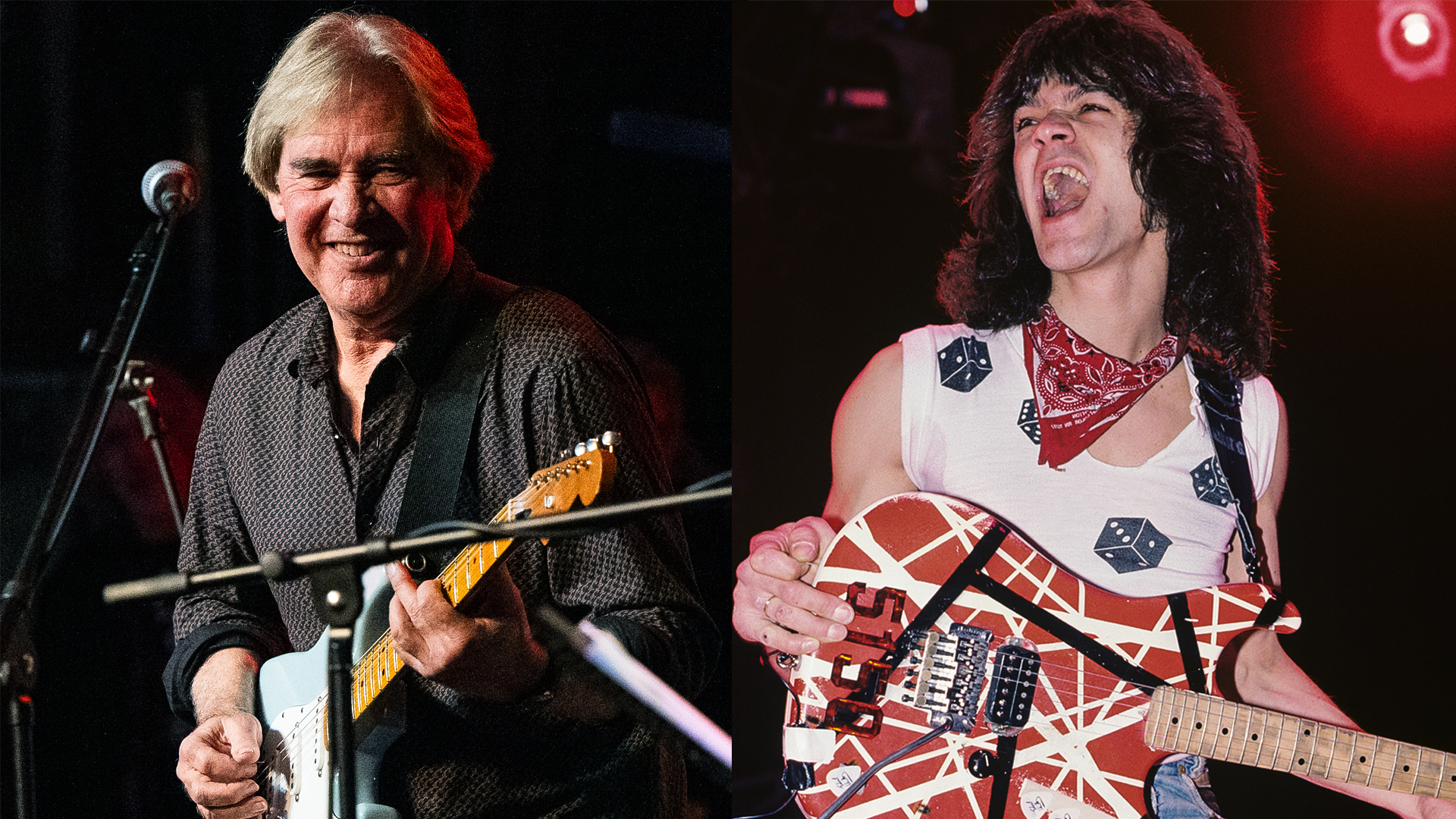
“I hate retirement,” David Crosby grumbles. The legendary, 81-year-old singer-songwriter and guitarist announced last year that he was calling it a day on touring life (this after six decades on the road), and he’s anything but happy about it.
“It’s miserable not being able to go out and play,” he says, “but after a certain point, it is what it is. Touring is too hard for a guy my age, and tendonitis has affected my ability to play guitar. It’s tough. There’s lots of guys who love being retired, but that isn’t me. It sucks.”
Crosby reveals that he’s still making music (“I can still sing as good as ever, maybe even better”), and he’s psyched about his continuing collaboration with Becca Stevens, Michelle Willis and Michael League, better known as the Lighthouse Band, which began with 2016’s aptly named Lighthouse album.
I hate retirement
David Crosby
“Whoa, boy, are they fun!” he raves. “I’ve admired them since they started. They’re such brilliant musicians and singers, and they’re fabulous people. We get along great. It was an accidental thing – I met Michael and started writing some tunes with him. The chemistry just blossomed, and then I started working with the whole band. I bring stuff out of them, they bring stuff out of me – it’s beautiful.”
In 2018, during one of his last full tours, Crosby performed with the Lighthouse Band in support of his album Here If You Listen. Their gig at the famed Capitol Theatre in Port Chester, NY, has recently been released in both physical and digital formats. “That was a fabulous night, and the recording we made I tremendous,” he says. “Of the live albums I’ve done, this is by far my favorite. I like it even more than Four-Way Street.”
The musician admits that coming up with a setlist was never one of his favorite aspects of touring. “That’s what happens when you’ve got a lot of songs,” he says. “It’s not so much about what to play than it is what to leave out. No matter what I did, people would always say, ‘Why didn’t you do such and such?’” He laughs. “I could have worse problems.”
A number of Crosby’s most iconic songs are featured on David Crosby & The Lighthouse Band Live at the Capitol Theatre, and here he discusses four of them – the original recordings and how he reworked them – as well as a relatively new number that sat in his garage for nearly 50 years.
All the latest guitar news, interviews, lessons, reviews, deals and more, direct to your inbox!
1. “Guinnevere” from ‘Crosby, Stills & Nash’ by Crosby, Stills & Nash (1969)
“It’s such a nice new version we did on the live album. The Lighthouse Band really loved the song, so we decided to play it together. We did it a little differently, but that’s OK. Songs aren’t static. Most people seem to have problems re-imaging their songs, particularly if they’re seen as famous or whatever.
Stephen [Stills] and Graham [Nash] thought it was a weird song. They knew it was good, but they thought it was pretty out-there
David Crosby
“I never had that problem, and the Lighthouse Band were game to explore. The funny thing is, not only didn’t we play the song like it is on record, but we didn’t even play it the same way twice ourselves.
“When I wrote the song, I was playing around with an open tuning [E, B, D, G, A, D] somebody showed me. It was the first time I ever worked with anything other than standard tuning or a drop D. I retuned the guitar and started playing, and my mind was blown. That tuning game me ‘Guinnevere,’ “Déjà Vu’ and a number of other songs. It blended jazz and folk, which is a really cool place to be, although that wasn’t my intention. I was just transported by the tuning.
“Stephen [Stills] and Graham [Nash] thought it was a weird song. [Laughs] They knew it was good, but they thought it was pretty out-there. But that’s the point! That’s one of the things I liked about it. It sets a mood.”
2. “Déjà Vu” from ‘Déjà Vu’ by Crosby, Stills, Nash & Young (1970)
“There’s several time signatures in this song. It starts off in 6/8 and then goes to a regular 4/4, but in the chorus it goes to 7/4. At the end it goes to 4/4. I wasn’t necessarily trying to put a jazz sensibility into it; it just came out that way. I’ve heard people say, ‘It spins me around in a circle,’ and my attitude is like, ‘Good. As long as it moves you.’
Stephen and Graham thought this was another weird song, but that’s the kind of stuff I write. Plus, it was weirdo days back then
David Crosby
“I played acoustic guitars and electric guitars when we cut it. We did a lot of takes of the song. I’ve read somewhere that we did 100 takes – that’s just crazy. We would never have done 100 takes of anything.
“Stephen and Graham thought this was another weird song [laughs], but that’s the kind of stuff I write. Plus, it was weirdo days back then. But the guys came along and got into it. Funnily enough, they picked the song as the title of the album. It wasn’t my idea. I never even suggested it.
“The new version is way different from what’s on the Déjà Vu album. It spreads out very leisurely. The chemistry of the Lighthouse Band changed it around in a really cool way.”
3. “1974” from ‘Here If You Listen’ by David Crosby (2018)
“Almost 50 years after I started this song, it’s now a reality. This is a little like ‘Tamalpais High,’ in that I had a song without any words. So what I would do was, I’d stack vocals like horns. It’s a totally valid thing to do.
It’s mind-blowing that something from five decades ago is now a new song
David Crosby
“I had one of those things sitting around in my garage, and Michael League found it. He got excited: ‘Hey, this is an unfinished song!’ I said to him, ‘Hey, if you want to write some words to it, go for it, baby.’ He and the ladies jumped on the song and wrote the words.
“There’s no significance to the title other than that’s when I started to write it. They came up with the title, not me. It’s mind-blowing that something from five decades ago is now a new song, but that just speaks to the creativity of the Lighthouse Band. They’re a creativity bunch. They see something and they just do. I have to work hard just to keep up with them.”
4. “Woodstock” from ‘Déjà Vu’ by Crosby, Stills, Nash & Young (1970)
“Joni Mitchell gave us a demo of the song. It was just her singing and playing guitar, and it was beautiful, of course. But it was completely different from what we ended up doing with it. I loved it immediately and thought it offered us a lot of territory to explore.
I keep talking about chemistry – that was chemistry, boy. You drop a song on CSN and Y, and you’re gonna see stuff happen
David Crosby
“I wish I could say that I had a plan to really rock it out, but it just happened, like so many things. Stills came up with the electric intro – he had already been working around with the song. It’s the only track on the album where all of us played together in one room.
“I keep talking about chemistry – that was chemistry, boy. You drop a song on CSN and Y, and you’re gonna see stuff happen. I played acoustic, and Stephen and Neil played electric. That was one of our go-to moves – guitar heroics from those guys. We could do that because they were that good.
“I never thought it would be a single. None of us did – we thought it was too weird. At that time, our singles were ‘Marrakesh Express’ and ‘Suite: Judy Blue Eyes,’ stuff that was a little softer. We weren’t known as a hard rock band, but we did an amazing job with this one.”
5. “Almost Cut My Hair” from ‘Déjà Vu’ by Crosby, Stills, Nash & Young (1970)
“I once said this was a juvenile song. It’s not a complex song; it’s simple, but I still like it. I’m not ashamed of it. I wish I could take credit for the guitar parts, but that was Stephen and Neil [Young].
I played them the song on acoustic, and they instinctively knew what to do. They attacked it.
David Crosby
“I played them the song on acoustic, and they instinctively knew what to do. They attacked it. [Laughs] I never had to show them parts. When you have guys that fucking good, you don’t need to show them anything. It was such a joy to watch them go at it.
“It’s a fun song that has some guts to it. Many, many people say that it’s one of their favorites. And I say, ‘Thank you.’”
Order David Crosby: Remember My Name here.

Joe is a freelance journalist who has, over the past few decades, interviewed hundreds of guitarists for Guitar World, Guitar Player, MusicRadar and Classic Rock. He is also a former editor of Guitar World, contributing writer for Guitar Aficionado and VP of A&R for Island Records. He’s an enthusiastic guitarist, but he’s nowhere near the likes of the people he interviews. Surprisingly, his skills are more suited to the drums. If you need a drummer for your Beatles tribute band, look him up.
